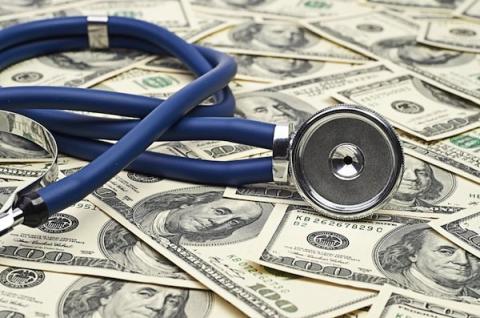W.E. Messamor’s article, “Seven Creative Solutions to the National Debt Crisis,” proffered some salient ideas for reducing federal debt.
When our elected officials finally decide to perform the work they were elected to do, thereby ending the siege in which they hold the US citizens hostage to their partisan nonsense, there are many areas they can act in reducing the ever-growing federal debt.
One such area, health care, comprises the highest portion of the estimated 2014 budget at a massive 26 percent of overall federal debt, or $973 billion -- more massive than even our estimated defense outlays. Furthermore, the federal budget will continue down this same path with a 17 percent increase in debt, an estimated $1.14 trillion in public debt for health care by fiscal year 2018, just 4 short years from now.
The problem, some say, is no one is willing to budge on the debate over funding ACA? No one wants to be the first to disembark the partisan ship which has so well kept them afloat for so many years?
Well, let's take a look at the beauty in this plan; we don't need to wait for Washington to stop playing their juvenile partisan games. We can begin reducing federal debt now and we can do so without any government assistance or intervention whatsoever.
As health care -- specifically ACA (Obamacare) -- debates drag along on a seemingly endless and, in my view, grossly misguided effort, it's easy to become misdirected from the source of the problem, but it's much simpler than you may think.Let's examine the system responsible for such a massive encumbrance on the federal budget, which at first appearances presents a somewhat daunting task.
The first thing we need to realize is that in the US, expenditures for health care far exceeds the ability of our society to sustain, growing quite literally by thousands of percentage points over the past 7 decades since Franklin D Roosevelt introduced employer provided health care programs in the early years of WWII.
Nonetheless, reducing the debt to manageable levels requires tackling the job from the right direction and that direction involves the people.
Unlike the other pieces of the budget pie, we have the ability to directly impact the federal debt problem facing us right now. No need to wait for the government to tell us what to do, or to make the effort for us.
We can truly make a difference and show our elected officials how to take the shovel to the dirt, so to speak.
We in the US love to lay claim to "the greatest health care in the world," a claim that may or may not be justifiable, but one thing is for certain, the citizens of the US use our health care programs far differently and much more frequently than our counterparts around the world.
According to the CDC, 82.6 percent of the US population visited a health care provider in 2012. Doesn’t sound like much? Well, let’s break this out in digestible numbers.
We frequently see statistics which appear as a ratio to population, one of the most commonly debated being that of gun ownership in the US at an extremely heavy ratio of 94.3 guns per 100 people. Yet, this ratio pales in the light of US health care statistics from the CDC:
“Number of visits (to physician offices, hospital outpatient and emergency departments) per 100 persons: 408.2”
“Number of physician office visits per 100 people: 332.2”
And the "number one complaint received by physicians during those visits? Cough!"
Given that Medicare is the ever-growing primary source of provider reimbursement (payment for services), the burden on the tax-payer is extraordinarily heavy and the system is ripe for abuse and even gross over-use:
“The current healthcare delivery system relies heavily on a fee-for-service (FFS) payment method in which a provider is paid a fee for rendering a specific service. Although seemingly straightforward, this system is built such that medical over-utilization and resource inefficiency are rewarded. Policies which further exacerbate this trend include the undervaluation of preventive services as well as the overvaluation of non-preventive services”
Further exacerbating this trend is the completely uninsured. In the US, it is illegal for any hospital to turn away individuals seeking treatment if they’re uninsured, including visits to the emergency rooms.
With ever-growing uninsured, now to be alleviated, or at least ameliorated by ACA, unable to pay their physicians of choice a visit, millions of those people with “coughs” are turning to a hugely expensive alternative: hospital emergency rooms around the country. This behavior not only over-taxes the provider’s resources, but the cost of which is, by law, absorbed by the hospital in what is commonly referred to as indigent care costs.
Hospital budgets are prepared every year with indigent care calculated as part of the cost of business and often attempt to recoup those losses by gaining coverage through Medicaid.
Reducing our over-dependence on health care is something we can do as individuals; we don’t need government intervention to accomplish a massive reduction in health care costs.
As we all learned in high school economics, “there ain’t no such thing as a free lunch,” and in any economic scenario, attempting to control intake at the wrong end of the animal of choice only results in a bloated animal.
Photo Credit: Nata-Lia / shutterstock.com
